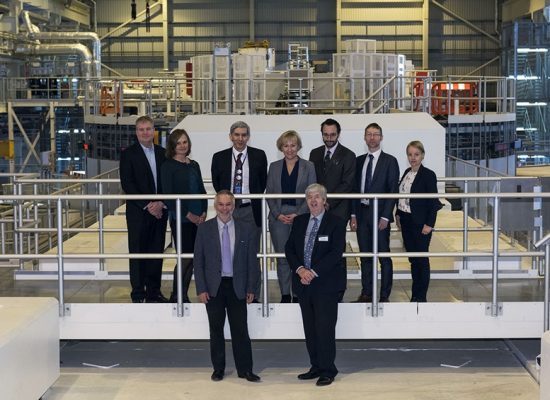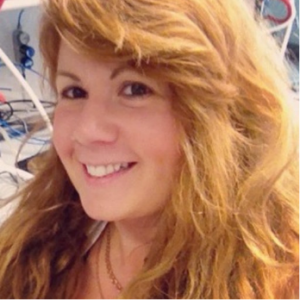SwedNess is a graduate school for neutron scattering operated by six of Sweden’s largest academic institutions/universities. The school is fully funded by the Swedish Foundation for Strategic Research (SSF) and aims to educate a new generation of highly skilled neutron experts. The research projects cover a broad range of scientific fields of high interest for both academia and […]
Jackie
ILL PhD Studentships
A PhD project can be proposed by any academic researcher authorised to supervise PhD students and belonging to a university or affiliated institution in one of the ILL’s Associate or Scientific Member countries. If the PhD proposal is selected, the main proposer generally becomes the external academic PhD supervisor in whose university/institution the PhD student […]
Nanotools to study biomolecular interactions at membranes, Malmö University
At the end of this course the student should be able to: Describe a set of models for biomembranes. Describe the principles of a set of nanotools with focus on AFM, IR, QCM-D, ellipsometry and Neutron Reflection. Relate biomembrane models to a given experimental technique. Apply a set of nanotools and nanomodels to unravel biomolecular […]
Neutron scattering for medical and biomedical research, 1,5 hp
This course is an experimental part of cross-disciplinary course “MAX IV/ESS-based imaging for medical and biomedical research”. The main purpose of the course is to educate graduate students on the utilization of major neutron facilities. Lectures, presented by researchers from academia and neutron facilities, will include basic tutorials on the principles of scattering theory and […]
Measurement Methods and Radiation Detectors, 7.5 hp
The course provides theoretical and experimental knowledge of the detection of ionizing radiation and a good knowledge on measurement technique. The course covers the measurement of small currents and charges, pulse height analysis, statistics and deadtime corrections. Gas-, scintillation- and semiconductor detectors are treated, as well as neutron detectors etc. It also covers gamma spectroscopy […]
Pulverdiffraktion med Röntgenstrålning och Neutroner inom Materialkemi, 7,5 hp
Pulverdiffraktion med röntgenstrålning och neutroner inom materialkemi, Spring, Stockholm University
Structural biochemistry, 15 hp
The course aims to give insights into protein structure, how it can be modelled and experimentally determined. We start by discussing the forces that drive proteins to fold into three-dimensional structures. Then we look at different databases and discuss homology modelling, i.e. how one can model a protein’s three-dimensional structure if one knows the structure […]
Scattering methods, 7.5 hp
The aim of the course is for the student to acquire basic knowledge and understanding of different scattering methods used to study structural and dynamic properties of colloidal dispersions. The course begins with basic scattering theory, followed by a presentation of various experimental methods such as Small Angle Neutron Scattering (SANS), Small Angle X-Ray Scattering […]
Characterization Techniques in Materials Physics using Neutron and Synchrotron Radiation, 7.5 hp
High brilliance and intensity sources, X-ray diffraction and scattering, neutron diffraction and scattering, X-ray absorption, X-ray emission, Photoelectron Spectroscopy, Imaging techniques. Read more…
Synchrotron- and Neutron based Experimental Methods and Applications, 15 hp
Purpose The course objective is for the student to develop an understanding of the theories for — as well as application, analysis and modelling of — experimental resources for synchrotron light and neutron radiation designs. Contents The course focuses on experimental methods and techniques available with synchrotron light and neutron radiation designs (such as ESS […]
Neutron Scattering, 10 hp
Neutrons offer a unique probe to address questions highly relevant to condensed matter research. In addition to the structure also the dynamics as well as magnetism can be studied. This is related to the characteristics of the neutron and the type of interaction with a sample differing from, e.g. x-rays or electrons. In this course […]
Neutrons used to locate hydrogen in high entropy alloys
Lately the effect of global warming has been generally accepted and the interest of renewable resources is constantly increasing. Hydrogen would serve this purpose as an alternative fuel; however, storage is a challenging task and there is a need for new materials, with higher hydrogen capacity and lower cost. The concept of high-entropy alloys (HEAs) […]
Using inelastic neutron scattering to understand the local structure and vibrational dynamics in proton conducting oxides for sustainable energy technologies
Proton conducting oxides, and in particular acceptor doped BaZrO3, are materials of great interest because of their huge potential as electrolyte in several energy related technologies, such as hydrogen sensors, membrane reactors, steam electrolyzers, and intermediate-temperature (200 – 500 °C) solid oxide fuel cells. A key requirement for the electrolyte is a high proton conductivity […]
Interactions between Model Cell Membranes and the Neuroactive Drug Propofol
Many low molecular weight drugs, like classical surfactants, contain both hydrophobic and hydrophilic groups. However, due to their lower molecular weight and less distinct separation into hydrophobic and hydrophilic regions, the self-assembly of such drugs in aqueous solutions is less easy to describe in general terms. To gain more understanding of the interaction between such […]
How AstraZeneca can improve lipid nanoparticle formulations for gene delivery using neutron scattering
In recent year, new therapeutic modalities involving delivery of biological molecules such as RNA, peptides and oligonucleotides have shown promising results to treat diseases that are currently hard to tackle with standard small molecules approaches. As an example, last year Alnylam announced the first therapy using small interference RNA (siRNA) approved by the Federal Drug […]
Neutrons used to probe magnetism in three dimensional magnetic data storage elements
The transition from the current two-dimensional data storage and logic schemes to three-dimensional data structures could significantly improve the performance and capacity of electronic devices. Instead of simply storing and manipulating data in a two-dimensional array of elements, one can envisage stacking data bits on top of each other, thus greatly enhancing the data density. […]
Important information from ESS regarding the VR Grant for Accessibility to Infrastructure
The ESS is asking for draft proposals for The Swedish Research Council’s “Grant for Accessibility to Infrastructure” no later than August 10, along with draft letters of support.
The Swedish Research Council’s Grant for Accessibility to Infrastructure
The Swedish Research Council has been mandated by the Swedish Government to work towards ensuring Swedish researchers participate to a greater degree in the construction and development of research infrastructure, and towards making research infrastructure more accessible and more used by the business and public sectors. Type of call Research infrastructure support Subject area Research […]
The Swedish Government presents a national strategy for ESS
The Swedish Government just presented a national strategy with the overall objectives for the Swedish participation in and hosting of the international European Spallation Source (ESS) research facility, currently under construction outside of Lund. The government’s premise is that the ESS is a unique opportunity for Sweden as a knowledge nation, which is also strengthened […]
Industrial pilot projects for neutron and photon experiments in large scale research infrastructures
In this call notice, Vinnova announces their financial support for pilot projects that build expertise on industrial utilization of advanced experimental environments similar to those developed at MAX IV and ESS in Lund. The work in the project will be verified of how neutron or photo technique is suitable for meeting a company’s problems or development needs.
Job Opening: PhD student position in materials physics of energy materials
Chalmers University of Technology is looking for a PhD student to join the research group of Associate Professor Maths Karlsson at the Energy and Materials Division of the Department of Chemistry and Chemical Engineering at Chalmers University of Technology and will also be affiliated to the Molecular Spectroscopy Group at the ISIS Pulsed Neutron & […]
Neutrons to study the interplay between aquaporins and porous silica in water treatment
Professor Martin Andersson (Chalmers) — Today, water purification typically includes a size-exclusion based filter that is specialized in removing a certain number of common water pollutants. But these filters do not remove all the pollutants present in water. So why not develop a filter that produces clean water regardless of pollutant? Guess what – nature already did.
Call to register interest in future in-kind contributions to the ESS (in Swedish)
The Swedish Research Council invites Swedish universities to send in their notice of interest for future in-kind contributions to the ESS. For more information and instructions, see the PDF document below or click this link (in Swedish only). The deadline for submitting your proposal is 20 May 2018.
Job Opening: Postdoctoral fellow in X-ray and Neutron Reflectometry – Sektor Material- og Prosessteknologi
A 2-yr postdoctoral position is available at Institute for Energy Technology (Kjeller, Norway) with suggested start at/after September 1st 2018. The fellow will work on the structural and magnetic characterization of magnetoelectric thin-film heterostructures with X-ray/neutron reflectometry and surface/interface diffraction.
The Swedish research minister, Helene Hellmark Knutsson, visit
The Swedish Minister for Higher Education and Research, Helene Hellmark Knutsson, visited the ISIS Neutron and Muon Source at the STFC Rutherford Appleton Laboratory near Oxford on March 19th 2018.
Job Opening: Postdoc in Advanced Characterization of Nano-structured Materials
The initial focus for this Postdoc position will be to investigate nano-structured energy materials with an emphasize on nano-platelets of both Na- and Li-ion battery compounds, as well as taking responsibility for such experiments as well as to co-supervise participating PhD students.
Plant superfood turned extraordinary surface glue: Neutrons reveal all
Professor Adrian Rennie (UU) –– New research using the INTER reflectometer at ISIS Neutron and Muon Source has revealed how plant proteins can be used to stick particles to solid surfaces, opening up a plethora of potential industrial applications.
SNSS researcher Dr. Selma Maric is awarded The Camurus Lipid Research Foundation Junior Prize
The Swedish Neutron Scattering Society is proud to announce that Dr. Selma Maric, one of our very own researchers, is one of the recipients of The Camurus Lipid Research Foundation Junior Prize 2018. Since receiving her PhD in biophysics 2014 at the Niels Bohr Institute (University of Copenhagen), she has held post-doc positions at the Karolinska Institute and […]
Job Opening: Associate Professor within Soft Matter and Polymer Synthesis related to Life Sciences
A permanent position is available at the Department of Chemistry for an Associate Professor in the subject area of Soft Matter and Polymer synthesis related to Life Sciences.







